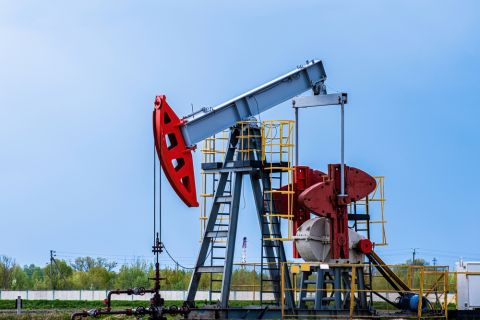
Cameron LNG ships the first commissioning cargo of U.S. LNG from the first liquefaction train of the export project in Hackberry, La. in May 2019. (Source: Sempra Energy)
SAN DIEGO—Sempra Energy Oct. 28 announced that it has entered into a memorandum of understanding (MOU) with Mitsui & Co. Ltd. reflecting the parties’ preliminary agreement for Mitsui’s participation in the Cameron LNG Phase 2 project in Louisiana, and a future expansion of the Energía Costa Azul (ECA) LNG project in Baja California, Mexico.
“This agreement signals continued momentum in the growing U.S. liquefied natural gas (LNG) export market, while reinforcing the unique competitive advantage that Sempra offers customers seeking LNG export capabilities from the Gulf Coast, as well as the West Coast of North America,” said Justin Bird, president of Sempra LNG. “We are pleased to expand our relationship with Mitsui and advance the development of both LNG projects.”
“We are pleased to further expand our strategic relationship with Sempra in a broader range of opportunities. This agreement will contribute to expanding Mitsui’s uniquely diversified supply portfolio worldwide by utilizing the strengths and capabilities of both companies” said Motoyasu Nozaki, managing officer, COO of Energy Business Unit II, Mitsui & Co. Ltd.
The MOU is non-binding and contemplates the continued mutual support for the development of Cameron LNG Phase 2, including Mitsui’s purchase of up to one-third of the available capacity of the project, as well as the potential offtake of approximately 1 million tonnes per annum (mtpa) of LNG and equity participation in a future expansion of ECA LNG.
ECA LNG is being developed with IEnova, Sempra's subsidiary in Mexico. Phase 1 of the project includes one liquefaction train with an export capacity of approximately 2.4 Mtpa. ECA LNG future expansion would include additional trains with an expected export capacity of approximately 12 Mtpa.
Train 1 of the Cameron LNG Phase 1 project started commercial operations in August 2019. Trains 2 and 3 are expected to begin LNG production in first-quarter and second-quarter 2020, respectively. Cameron LNG Phase 2, which has all necessary permits from the Federal Energy Regulatory Commission, encompasses up two additional liquefaction trains and up to two additional LNG storage tanks. Mitsui is also an equity owner of Cameron LNG LLC, the development company for Cameron LNG Phase 1 and Phase 2.
Last November, Sempra LNG and Mitsui entered into a heads of agreement and are currently working to negotiate and finalize a definitive 20-year LNG sales-and-purchase agreement for the potential purchase of 0.8 Mtpa of LNG from the ECA LNG Phase 1 project.
Development of Sempra Energy’s LNG export projects is contingent upon obtaining binding customer commitments, completing the required commercial agreements, securing all necessary permits, obtaining financing and reaching final investment decisions, among other factors. In addition, the ability to successfully complete construction projects, such as the Cameron LNG export project, is subject to a number of risk and uncertainties.
Recommended Reading
Private Equity Gears Up for Big Opportunities
2024-10-04 - The private equity sector is having a moment in the upstream space.
Investor Returns Keep Aethon IPO-ready
2024-10-08 - Haynesville producer Aethon Energy is focused on investor returns, additional bolt-on acquisitions and mainly staying “IPO ready,” the company’s Senior Vice President of Finance said Oct. 3 at Hart Energy’s Energy Capital Conference (ECC) in Dallas.
Quantum’s VanLoh: New ‘Wave’ of Private Equity Investment Unlikely
2024-10-10 - Private equity titan Wil VanLoh, founder of Quantum Capital Group, shares his perspective on the dearth of oil and gas exploration, family office and private equity funding limitations and where M&A is headed next.
Sheffield: E&Ps’ Capital Starvation Not All Bad, But M&A Needs Work
2024-10-04 - Bryan Sheffield, managing partner of Formentera Partners and founder of Parsley Energy, discussed E&P capital, M&A barriers and how longer laterals could spur a “growth mode” at Hart Energy’s Energy Capital Conference.
Private Producers Find Dry Powder to Reload
2024-09-04 - An E&P consolidation trend took out many of the biggest private producers inside of two years, but banks, private equity and other lenders are ready to fund a new crop of self-starters in oil and gas.





